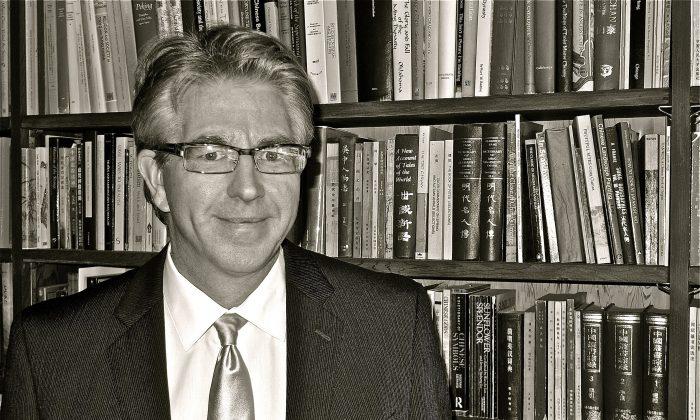Museum: “A place for learned occupation of the Arts or the Sciences,” from the Greek Mouseion, derived from Mousa, or “Muse.”
Noted archaeologist Leonard Woolley, while excavating a Babylonian palace in 1925, discovered a curious group of artifacts. They were from many different locations, and each peace of art was at least 500 years older than the pavement they were found in, and remarkably for that time they formed a collection with all the artifacts organized and each one was labeled.
A scribe signed an artifact: “I have seen and wrote for the marvel of all beholders.”
Woolley had accidentally discovered the world’s first known museum, the museum of Princess Ennigaldi, the daughter of King Nabonidus, last of the great kings of the Neo-Babylonian Empire. She was the high priestess of the moon god called Nanna. In approximately 540 BCE Ennigaldi created her own museum.
Over 2,500 years ago, a Babylonian princess took it upon herself to make the past immortal.
When history is preserved, studied, and organized, it allows us to be a student of futures possibilities. The spear and the sword are in the same building as Monet’s serene water lilies and the statues of calm and contemplative Buddhas, and by studying history and the work of its important and dedicated curators, the past becomes educational art form that could allow us to become creative collectors of our own futures.
This week’s column features an interview with Stephen Little, of the Los Angeles County Museum of Art (LACMA). Little is the Florence and Harry Sloan Curator of Chinese Art, and Head of the Chinese & Korean Art Departments at the museum. An authority on East Asian art, Little grew up in Southeast Asia and the Middle East. He received his PhD from Yale University in 1987 in the field of Chinese painting. He has held curatorial positions at art museums across the country, and was director of the Honolulu Academy of Arts from 2003–2010 before joining LACMA’s staff in 2011. He has numerous publications to his name, and has taught at Harvard University, among others.
SBB: You are the curator and department head of Chinese Art for LACMA, truly a museum of international importance. Before we talk about LACMA, I’m sure our readers would be interested to know that you have taught Oriental Asian art and East Asian philosophy. You and I have talked about the particular creative difference between Eastern and Western art. Please share your thoughts.
SL: While the motivations that spur artistic creation in both Asia and the West are usually the same (as we are all human, and human nature tends to be consistent across cultures), there are nonetheless distinct and often significant differences between Asian and Western worldviews, particularly in the ways in which human beings imagine reality to be constructed and to operate.
Many Asian systems of belief, among them Buddhism and Daoism [sometimes spelled Taoism], teach a profound respect for nature, and the need to live in balance with the natural world—this is certainly evident in such realms as Daoist cosmology and in traditional Chinese landscape painting.
This is rather different from the prevalent Western view that encourages humans to have dominion over the earth and its creatures. I can imagine that in the West’s pagan past there was a much deeper respect for nature than obtains today, but we now seem quite out of touch with this concept. These ways of constructing reality and imagining humanity’s place in it inevitably play in role in the arts.
SBB: And how does Eastern religion, such as Buddhism or Daoism, influence Oriental Asian art?
SL: While Buddhism, which emerged in India, and Daoism, which emerged in China, have many differences, they also share many beliefs—among them that the world that we perceive in our daily lives is largely illusory—or, to be more precise, it is not that the world is illusory, but that our perceptions of it are illusory and transient.
Daoism, for example, teaches that reality emerges from a void that is simultaneously empty and pregnant with the potentiality for all of existence (as the Daoist classic “Dao De Jing” states, “Being and non-being have the same origin.”). This is an inherent paradox, and it is typical of Asian systems of belief that such paradoxes are accepted as fundamental aspects of reality.
In the West, particularly with the advent of monotheistic religions, it is a given that some things are fixed and absolute (e.g., the existence of God), whereas in Asia gods (and goddesses) come and go—in both their significance and very existence—and this is not perceived as a problem, but part of the natural flow of things.
To give another example, Daoists have traditionally believed that all things are made of a vital and numinous energy known as qi, and that matter and energy are interchangeable. Thus when the Chinese paint a mountain, it is perceived by both the artist and his (or her) audience not as something fixed and solid, but rather as made of energy that moves and breathes—and that the mountain has its own life, in that it, like the human body, is born, lives, and dies. These elements contribute to some of the underlying assumptions about reality that help explain some of the differences between Asian and Western art.
At the same time, in both Asia and the West works of art have specific functions that can be religious, political, or didactic (to name a few)—these are aspects that are shared in both worlds.
SBB: How do you think this would change the way we view Asian art? And how do these differences affect what art can do to educate and inspire us?
SL: Art provides a window into different cultures, and when properly interpreted (since visual art is essentially non-verbal, even though often enough tied to words and texts) it can transform the ways in which people see both the world and themselves.
One of the pleasures of working in an art museum is working with great works of art that can help visitors understand cultures and ways of life that might appear, on the surface, as quite alien from our quotidian reality. To give another example from Chinese painting, artists often attempted to visually delineate the veins of energy (known as “dragon veins” or longmo) that run through a mountain or landscape in their paintings. These “dragon veins” (which play a key role in Chinese geomancy or fengshui) have their counterpart in the meridians of energy that flow through the human body—Chinese acupuncture is based on this theoretical model.
Thus in ancient China the structure of the human body and the structure of mountains were seen as mirror images of each other. Looking at Chinese landscape paintings with this in mind helps us understand, to a degree, why they are constructed and painted in the way they are.
SBB: Can you give us a historical example of Chinese art that achieves this?
SL: One of the finest examples of Chinese painting in LACMA’s collection is Wu Li’s large hanging scroll of 1674 entitled, Reciting Poetry before the Yellowing of Autumn. This work was painted during the Kangxi reign of the early Qing dynasty, and is dedicated to Wu Li’s painting teacher Wang Shimin.

“Reciting Poetry before the Yellowing of Autumn,” painted by Wu Li, 1674. (LACMA)
It is noteworthy that even though Wu Li was converted to Catholicism by Jesuits in 1682, and was ordained as a Catholic priest in 1688, his landscape painting, rendered in ink on paper, is entirely rooted in traditional Daoist (and Chinese) ways of understanding the structure of mountains as fluid and alive.
SBB: And would you share with us a new Chinese artist, new in his or her conceptual approach or vision—their “meta,” if you will?
SL: I think a good example of a contemporary Chinese artist whose work is both rooted in and yet transcends tradition is Xu Bing (born 1955). Xu bases much of his work on the traditional Chinese writing system, in which words are individually written as ideograms or characters. The Chinese writing system is not phonetic, unlike English—in which any word can be written with the twenty-six phonetic symbols of the alphabet—in Chinese each word is written with its own character, which makes for an astonishingly complex and visually beautiful system of writing.

An installation of Chinese artist Xu Bing, at LACMA, which was on display until July 26. (LACMA)
Xu Bing uses both Chinese and English systems of writing in his work, and has even created a fictional written language, some aspects of which blend Chinese and English written forms. I think what is most powerful about Xu Bing’s work is the way in which he leads the viewer to consider the somewhat arbitrary and changeable nature of language, the ways in which writing embodies and reflects patterns of human thought, and the ways in which languages and systems of writing change over time—questions that have a global relevance. (LACMA currently has on view the artist’s solo exhibition, The Language of Xu Bing, on view in the Hammer Building through July 26).
Part II will feature a preview of LACMA’s expansion plans in the near future.
Shelley B. Blank has worked with major national and international newspapers as a journalist as well as a corporate executive. He has produced programs for Public Radio and lectured on modern multimedia communications and technology.




